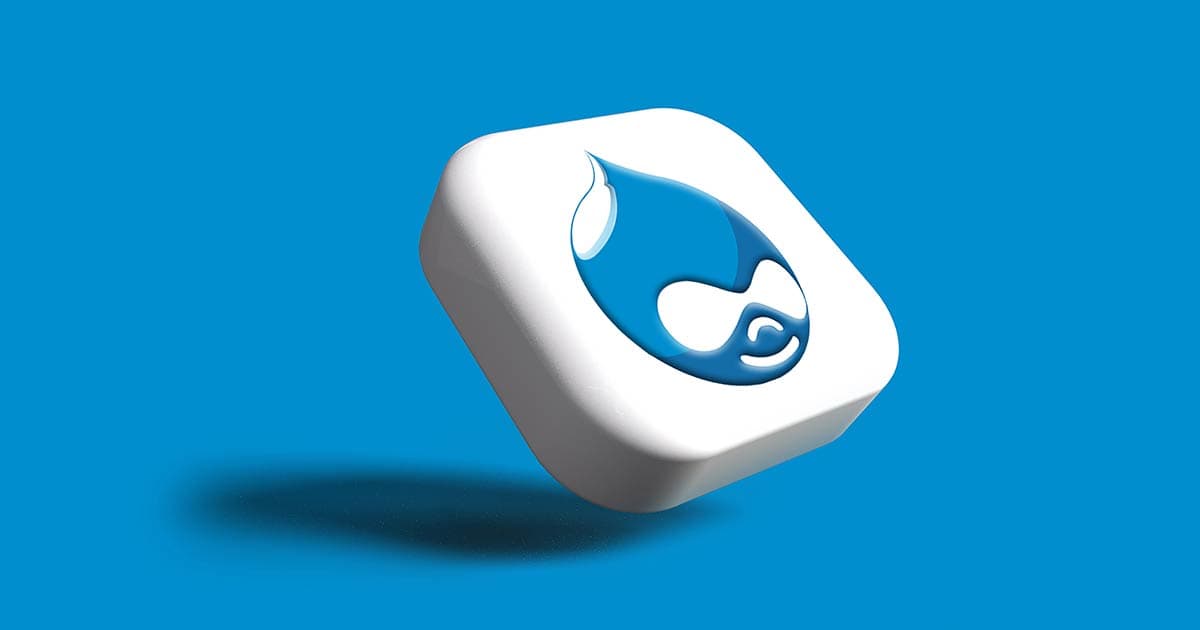

Jan 12, 2023
On the 14th of December 2022, Drupal announced the launch of Drupal 10, the latest platform version with headless CMS features. Drupal 10 introduces new, improved features and a modern approach to content management.
Many existing Drupal users are now considering migrations to higher versions (8,9 and 10). This is because, by the end of 2023, Drupal 7 will no longer be supported by the Drupal community. There’s also the option of migrating to Drupal 10 immediately to capitalize on its features because 8 and 9 are not headless-friendly.
Over the years, Drupal has also had notable problems during the migration process, as well as other issues like slow plugin updates. Plus, with so many other headless platforms on the market already, Drupal may be a little late to the headless party.
In this article, we’ll dive into some things that Drupal users need to consider as they ponder their next upgrades, whether they want to remain in the Drupal ecosystem or test the waters elsewhere.
Let’s Set The Scene: The Drupal Landscape in 2023
Drupal remains one of the most popular CMSs on the market, powering roughly 1.8% of all websites. However, despite its popularity, one of the biggest challenges of working with Drupal has been frequent upgrades.
The Migration and Upgrade Challenges
Drupal 7, 8, and 9 are the previous versions of Drupal that are still supported by the community but are approaching end-of-life. The end-of-life date for Drupal 7 will finally occur in November 2023, following frequent extensions. Drupal 8 experienced its end of life on the 21st of November 2021, while for Drupal 9, the end of life is expected to occur sometime in November 2023.
Essentially, the end of life for all Drupal versions will occur at the end of 2023, removing community support and valuable security and plugin upgrades. The additional challenge many of these users will face is the difficulty in migrating to another version of Drupal, which sometimes means upgrading to the next version in the sequence before you can migrate to the latest version. Drupal themselves even recommend that Drupal 7 users migrate to version 8 first before they can upgrade to 9 or 10 at a later date in some instances.
Drupal leverages open-source plugins that offer a ton of functionality. But those plugins can become a stumbling block whenever there’s an upgrade. All plugin developers have to make upgrades to get them compatible with the latest versions, which can take months, years, or may never happen for that particular plugin. Even though Drupal the company comes up with a new version, existing users have a far more complex issue on their hands.
Security Issues
Despite the many incredible features of Drupal, the platform recently issued a security advisory containing four critical security risks and vulnerabilities with a rating of moderately critical to critical. Drupal 9.3 and 9.4 versions are most affected by these latest vulnerabilities and could lead to hackers gaining the ability to run malicious code that could compromise a website. However, these security flaws are quite common with large open-source platforms such as Drupal, which can suffer from the infrequent plugin and patch updates across the board.
What’s New In Drupal 10?
Drupal 10 has gotten a lot of attention from developers and users worldwide. The version comes equipped with modern, future-proof headless capabilities such as the Claro administration theme (a replacement for seven), CKEditor, and Olivero default theme.
Let’s explain some of the Drupal 10 features:
Claro Administration ThemeThe Claro theme replaced the seven theme, designed for Drupal 7 back in 2009. The new theme is designed in adherence to the modernized standards of a headless CMS.
Olivero Default ThemeDrupal 10 has an intuitive, user-friendly Olivero theme for the admin panel. The theme was created to work with commonly used features such as the “Layout Builder.” It is also Web Content Accessibility Guidelines (WCAG AA) compliant.
Decoupled MenusDrupal 10 expands the number of web service endpoints made available to developers. This means you can now create a vast repository of web components and integrations for JavaScript frameworks such as React, Vue, Angular, and more.
CK Editor 5The default rich text (WYSIWYG) editor is the CK Editor 5. With this feature, content editing becomes, and text management becomes seamless.
Drupal 10 Reaction: How Are Drupal Users Reacting to Drupal 10?
On Reddit, web developers have expressed mixed feelings about their relationship with Drupal and its ongoing cycle of forced migrations.
Risky to Upgrade
“I’m barely on D9, it’s going to be a while,” writes one user, attracting nine upvotes. Another user chimed in regarding the risky nature of upgrading to Drupal 10 too early. “I’m not upgrading until the needed modules are known to be D10-compatible, and there’s no indication of when that will be. I’m not upgrading my site if I can’t use my webforms on it,” the developer wrote.
Too Many Delays
A user also expressed the delay it took to upgrade all the modules for 10. He says, “Upgraded to 9.5, waiting on a few Contrib modules to get on 10. Took about a week to upgrade / refractor all 37 of our custom modules and a custom theme, but they’re all ready for 10.”
Incessant Releases
Another user seemed annoyed about the constant releases and the difficult transitions. The user said, “As a drupal dev since 6, I’m getting pretty pissed off at these seemingly rapid-fire releases that are not smooth transitions from previously existing environments. It allows for continual billing to clients (which is nice), but almost zero continuity between platforms and modules. I have a system built in 7 with multiple custom modules and 7-exclusive modules. It will never re-exist in 9. Not for what the client originally paid. Shout me down. Prove me wrong.”
A Quick Migration?
This user explained that it only took an afternoon to migrate to Drupal 10, with only a few issues resolved immediately. He said, “I did a D9 to D10, with no content, just a few modules. It took a solid afternoon, there were some bumps, but it all worked out. Also, there are D8/D9 modules that aren’t compatible w/ D10; yet. On the bright side, responsive grid views are now in Core. D10 looks really sweet! Congratulations and BIG THANKS to the developers!”
Migrating to Drupal 10? Consider These Options First
While a lucky few may have a quick and painless migration, the reality is that many existing users are far from happy. For large enterprise companies with thousands of content assets, hundreds of modules and more, the need to migrate could be a reason to consider other options.
As an existing Drupal customer, you should consider the following options before migrating to Drupal 10:
-
Ensure Working Modules:You need to stay inside the Drupal lifecycle. You also must ensure your modules will work post-migration before moving. Then, you will need to wait a few more years before having to repeat the process for Drupal 11 whenever it is released.
-
Stay As You Are: If you’re using Drupal 8 or 9, you still have some time before considering migration. With the time at hand, you could think about what your technology stack should look like in the future. Eventually, you will have to migrate your version, so you might as well start weighing your options.
-
Consider Other Headless CMS: Now may be a good time if you’re in a situation where you want composability for your business. Drupal 10 offers you composability, but the slow updates on plugins (or never, since there’s no guarantee that each plugin developer will make the necessary changes). Many plugins will need a lot of work to be headless-compatible. Many plugins include the “head” by default. If this is the case for your project and modules, exploring other options should be strongly considered.
While many companies may have been hesitant to adopt a headless CMS before due to unfamiliarity with these types of solutions or the daunting migration process, everything doesn’t need to happen all at once.
The path to headless can be incremental. You could implement headless features using another platform on one site or landing pages to test the waters. The best thing about vendors that follow the principles of composability and MACH is that you can do it step by step. This is great for a slow and steady migration and your bottom line, as costs can be more carefully managed.
For example, many companies may choose to run Contentful or another headless CMS and Drupal at the same time to see if headless is the right fit for them before committing to a complete migration.
Read More: Drupal Site Audit: 3 Considerations to Keep in Mind
Explore Your Options with Oshyn
One thing’s for sure: the Drupal community stands at a crossroads. Drupal 10 is undoubtedly a step in the right direction, and sticking with Drupal will make sense for many companies.
At the same time, now is also the ideal opportunity to explore other options in a market teeming with high-quality headless CMS solutions such as Sitecore, Contentful, or others.
Whatever you decide on, Oshyn, a renowned technology partner for several top CMS and DXP companies, is here to help you get started on your journey toward delivering a top-tier digital experience for customers.
Getting ready to move to a new CMS? Take a look at our Content Migration Guide for some of the things you need to consider.
This site is protected by reCAPTCHA and the Google Privacy Policy and Terms of Service apply.







